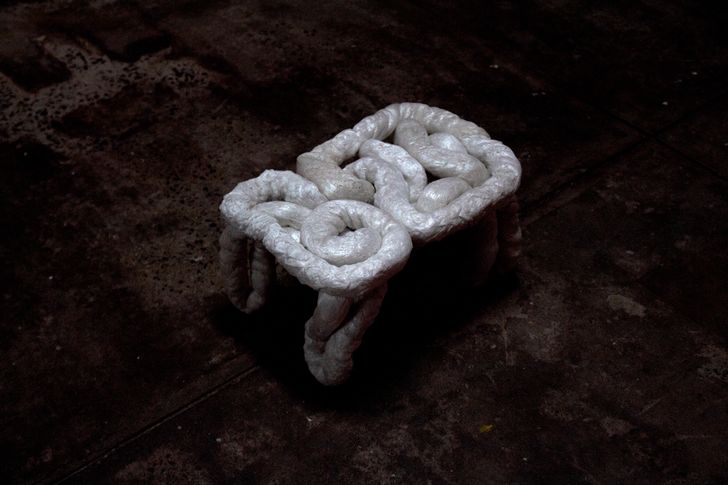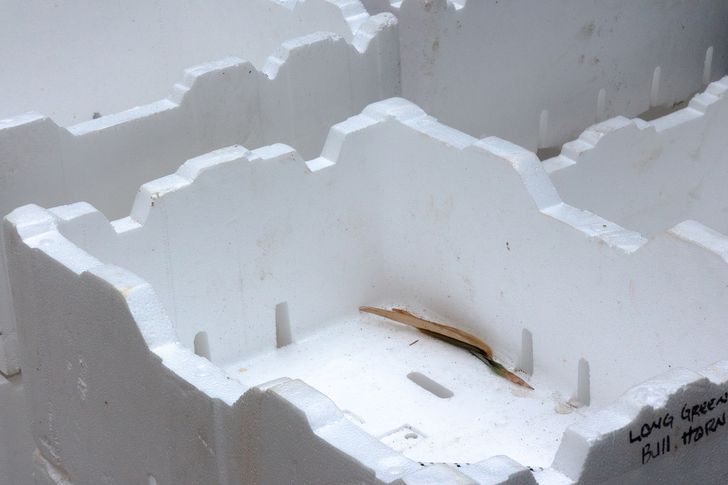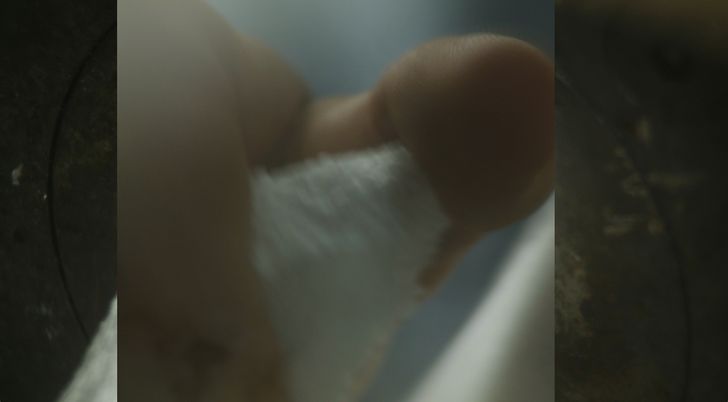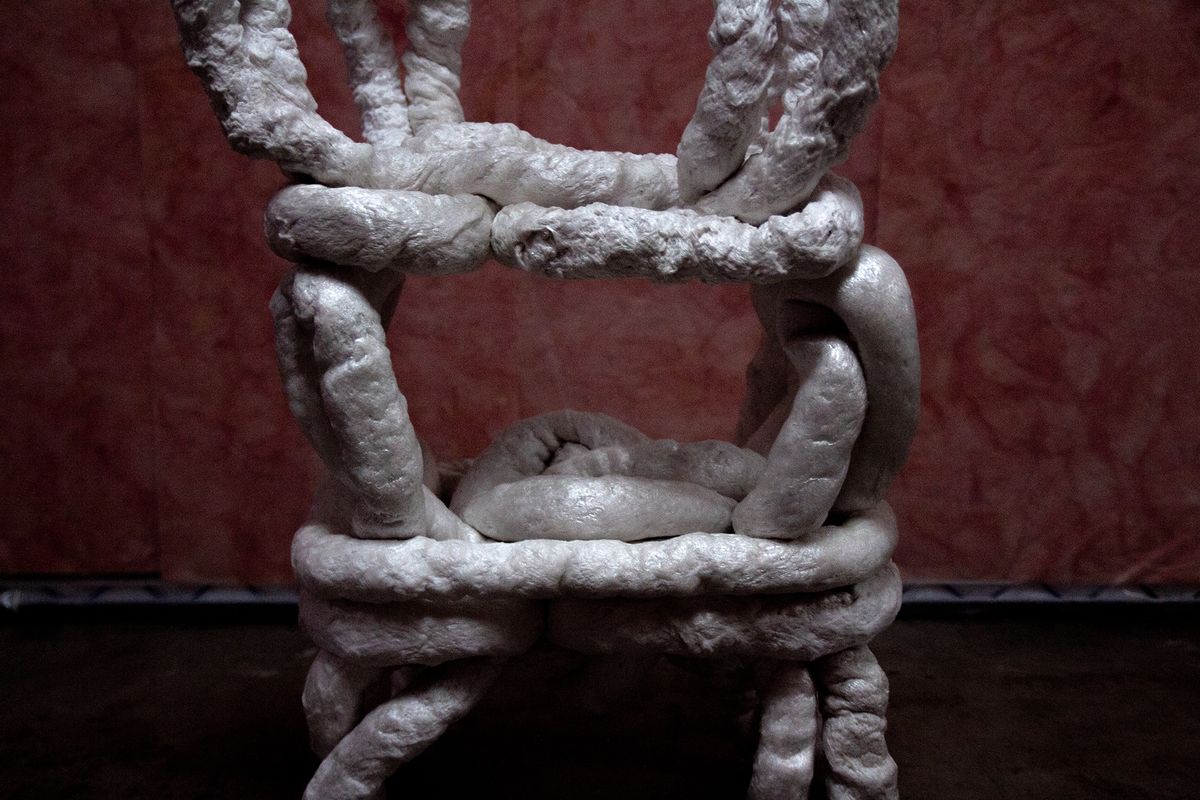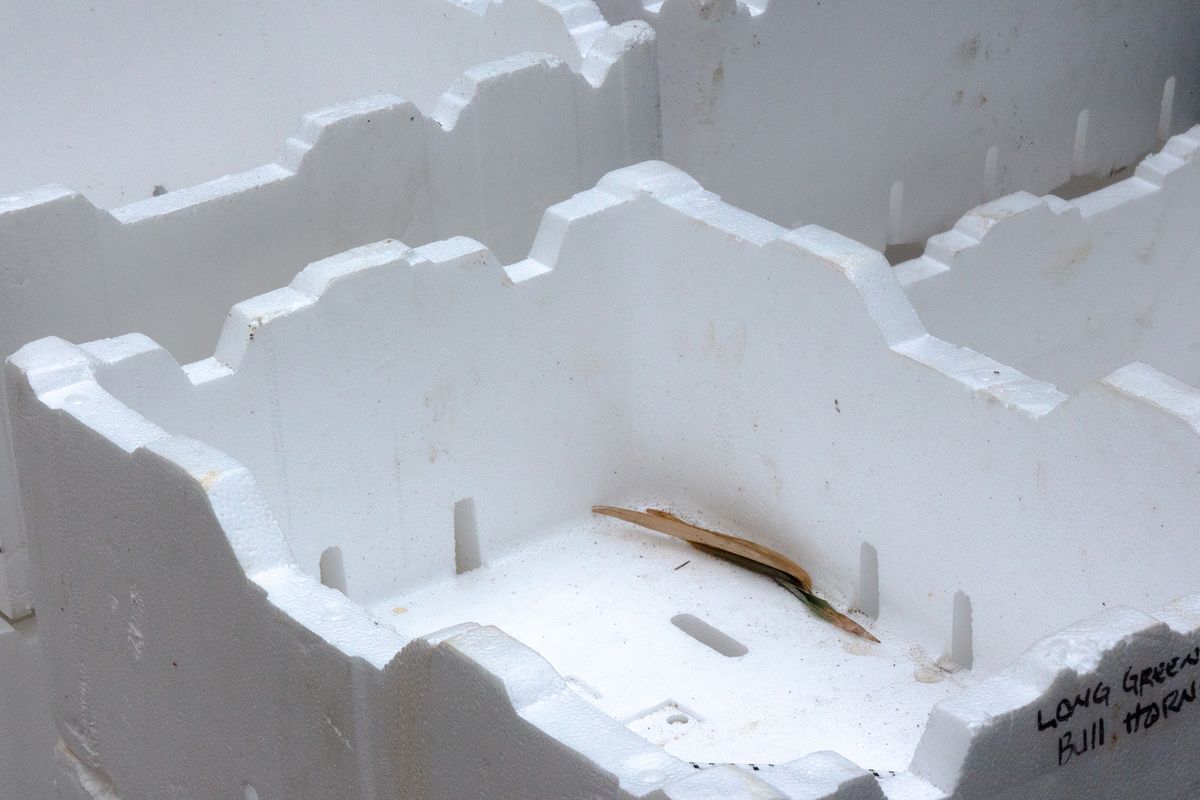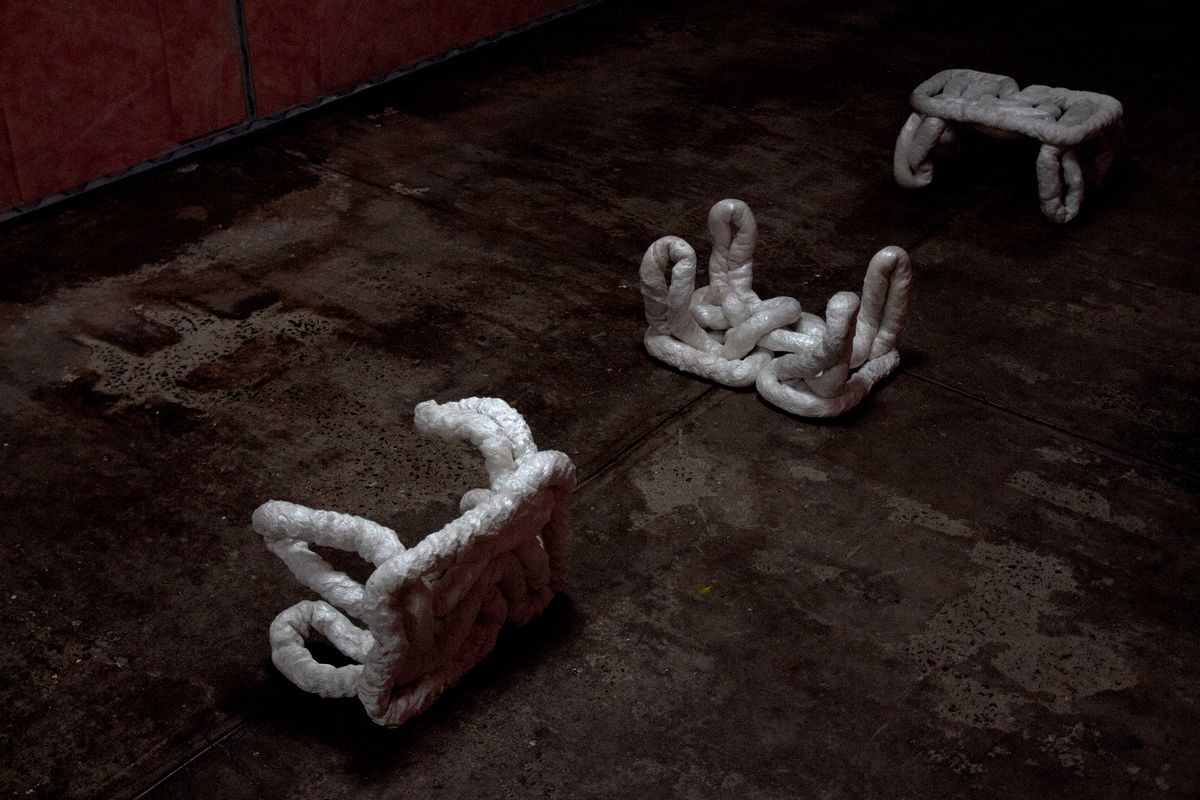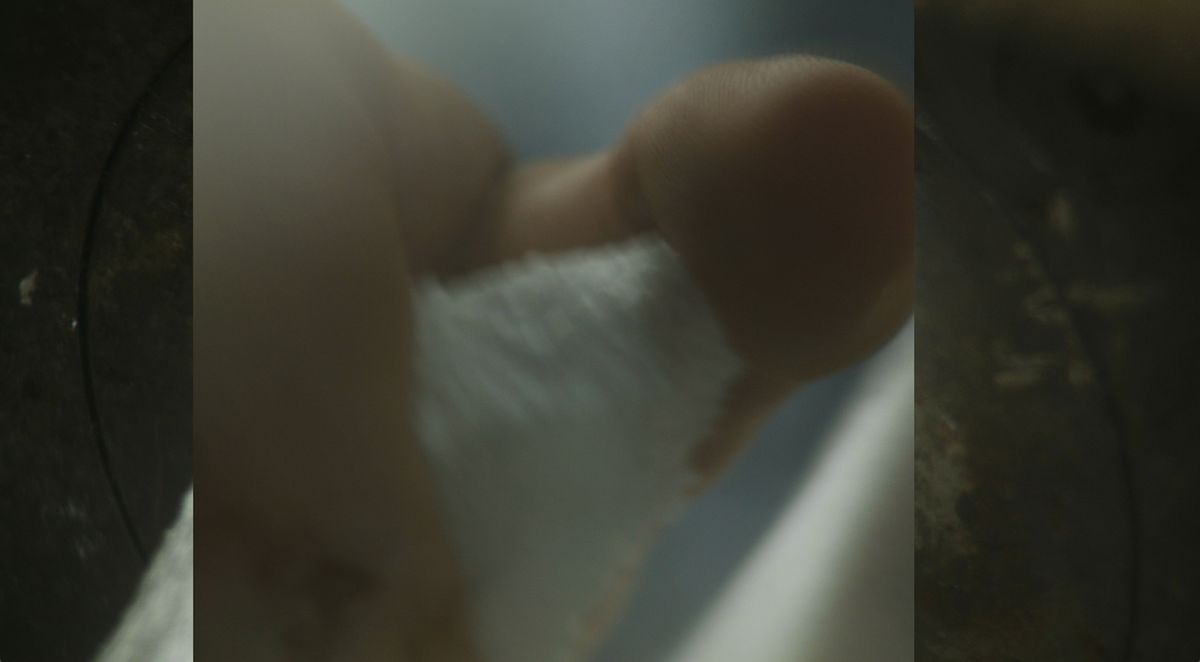Part of the 2022 Melbourne Design Week program, Polyphase, a site-specific installation created by architecture graduate Sarah Mair of Project Poly in conversation with architecture and film space Qality (Sophie Adsett and Felix Adsett) raised the possibility of using recycled materials in everyday practices. Held at the end of an industrial laneway in Brunswick, the exhibition presented a series of furniture items crafted by Mair from reshaped expanded polystyrene (EPS) and an experimental film documenting this process by Felix Adsett. The show questioned conventional approaches to sustainability in material use, the aesthetics of furniture design and explored how we might go about repurposing common waste.
The design of the exhibition space encouraged visitors to think beyond the relationship of material and form, furniture and space, object and film.Entering through a dark curtain, visitors found themselves in a confined elongated space enclosed by pink, fleshy fibreglass batts, with seven stools of varying colours occupying the centre of the room and a single-channel video playing at one end. Casting soft shadows on the raw concrete flooring, the differing material qualities and colours of the of the stools (that ranged from a pearly white to a smudgy black) contrasted with their silhouettes. The sequence of the stools in the space narrated the process of Mair’s explorations in material re-use, from initial discovery through the stages of experimentation and testing of different approaches to shaping and form-making, with the final two stools in the series being shaped by Mair entirely by hand. The last stool in the series, Mair revealed, had been placed outside and exposed to the elements and the weather for a period of two years.
The pale coiled forms of the stools contrast with the existing industrial floors of the exhibition space.
Image: Qality (Felix Adsett)
Complementing Mair’s sculptural pieces, Qality’s video relayed the crafting of the works, overlaid with the uncanny, distorted and degraded sounds of the production process and the shattering of the polystyrene foam, in a looping eight-minute film. The second half of the film depicted the first half in reverse, an effect that added to the installation’s intentionally discomforting confluence of sight and sound.
Mair presented a workshop as part of the exhibition. A Melbourne School of Design graduate, Mair’s interest in waste and materials developed through her participation in an Experimental Design Lab (ExLab) studio led there by Jas Johnston in 2019. Gathered around the exhibition entrance, surrounded by a noise and havoc of the construction site, the car park, and the rears of various businesses housed along the alleyway, she shared the stories behind the development and making of her pieces.
As part of the ExLab workshop, Mair had collected rubbish from the Birrarung (Yarra River), discovering that most recycled expanded polystyrene fragments are compressed before being sent to landfill. Rejecting the notion of deferring collective environmental problems, Mair sought to repurpose the waste she had gathered by converting it into everyday objects. Through a process of heating the material up to 150 degrees Celsius, the designer has handcrafted the waste into a series of stools and pot planters. In addition to having a porcelain-like quality, Mair explains that the piecesare extremely durable.
Project Poly collects polystyrene vegetable crates that would otherwise go to waste and recycles and reshapes them into items of everyday furniture.
Image: Qality (Felix Adsett)
Bodily movement is another important component of the project. During her process of reshaping the polystyrene, Mair’s manoeuveres are almost like dancing, a physical choreography of twisting, rolling, and turning that coaxes the material into its final form.
Sophie Adsett, architecture student and Qality co-director, in concert with Mair’s philosophy of sustainable re-use, curated and constructed the Polyphase exhibition space using existing materials. An arrangement of reusable insulation batts make up the interior space, while the outdoor area has a more industrial vibe: rough gravel ground and a huge hook-lift bin for recycling materials faces the exhibition entrance. “It’s a funny dynamic here, being at the end of a laneway,” says Adsett. “It’s a place of uncertainty.” The gritty character of the site and its corresponding atmosphere of potential fits well with the project’s narrative of reusing and adapting the found.
A film still from the video documenting the process of heating and shaping of the polystyrene to create the stools.
Image: Qality (Felix Adsett)
Polyphase furthers discussion around the possibilities of how designers might engage with the recycling of materials. Through the sharing of their ideas on the future of waste and materials, the exhibition and its designers argues that we should appreciate the recycling of found materials as a response to the environmental crisis. “The project is about mining the past and using it for the future,” explains Mair.
There is a growing consciousness within the landscape architecture industry (and indeed, more broadly) of the value of using locally sourced and recycled materials. As landscape architects, we need to engage with issues of sustainability at all scales – and everyday objects can be an expression of this practicality. Polyphase demonstrated hands-on ways of living and working with our broad ecology of found materials, showing how we might recalibrate our approaches to engage with a new paradigm of waste that highlights and harnesses the potential of what already exists.
Polyphase was on show at 595 Little Breese St, Brunswick from 20 to 27 March 2022 as part of the 2022 Melbourne Design Week program.


